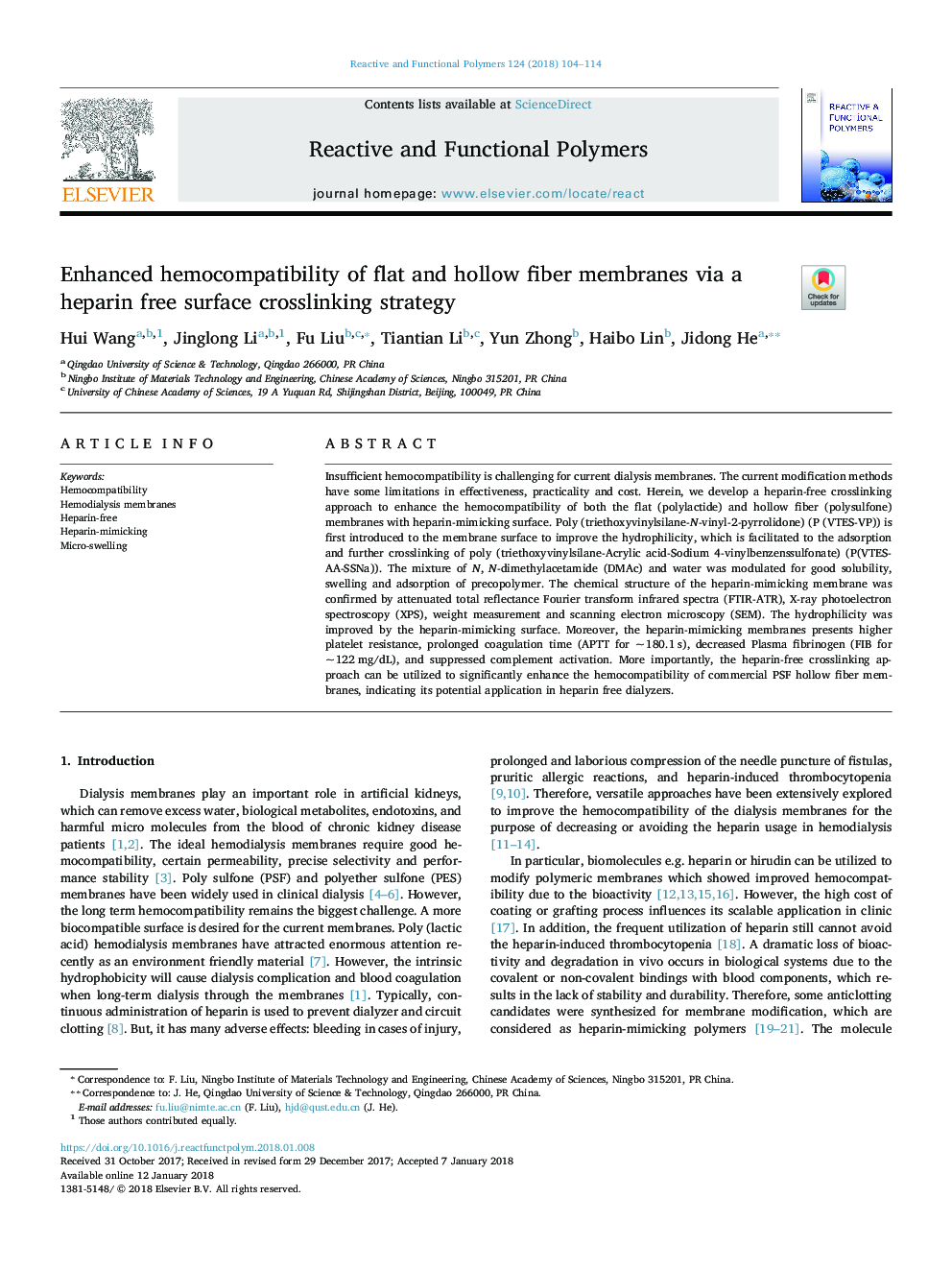| Article ID | Journal | Published Year | Pages | File Type |
|---|---|---|---|---|
| 7826384 | Reactive and Functional Polymers | 2018 | 11 Pages |
Abstract
Insufficient hemocompatibility is challenging for current dialysis membranes. The current modification methods have some limitations in effectiveness, practicality and cost. Herein, we develop a heparin-free crosslinking approach to enhance the hemocompatibility of both the flat (polylactide) and hollow fiber (polysulfone) membranes with heparin-mimicking surface. Poly (triethoxyvinylsilane-N-vinyl-2-pyrrolidone) (P (VTES-VP)) is first introduced to the membrane surface to improve the hydrophilicity, which is facilitated to the adsorption and further crosslinking of poly (triethoxyvinylsilane-Acrylic acid-Sodium 4-vinylbenzenssulfonate) (P(VTES-AA-SSNa)). The mixture of N, N-dimethylacetamide (DMAc) and water was modulated for good solubility, swelling and adsorption of precopolymer. The chemical structure of the heparin-mimicking membrane was confirmed by attenuated total reflectance Fourier transform infrared spectra (FTIR-ATR), X-ray photoelectron spectroscopy (XPS), weight measurement and scanning electron microscopy (SEM). The hydrophilicity was improved by the heparin-mimicking surface. Moreover, the heparin-mimicking membranes presents higher platelet resistance, prolonged coagulation time (APTT for ~Â 180.1Â s), decreased Plasma fibrinogen (FIB for ~Â 122Â mg/dL), and suppressed complement activation. More importantly, the heparin-free crosslinking approach can be utilized to significantly enhance the hemocompatibility of commercial PSF hollow fiber membranes, indicating its potential application in heparin free dialyzers.
Keywords
Related Topics
Physical Sciences and Engineering
Chemistry
Organic Chemistry
Authors
Hui Wang, Jinglong Li, Fu Liu, Tiantian Li, Yun Zhong, Haibo Lin, Jidong He,
